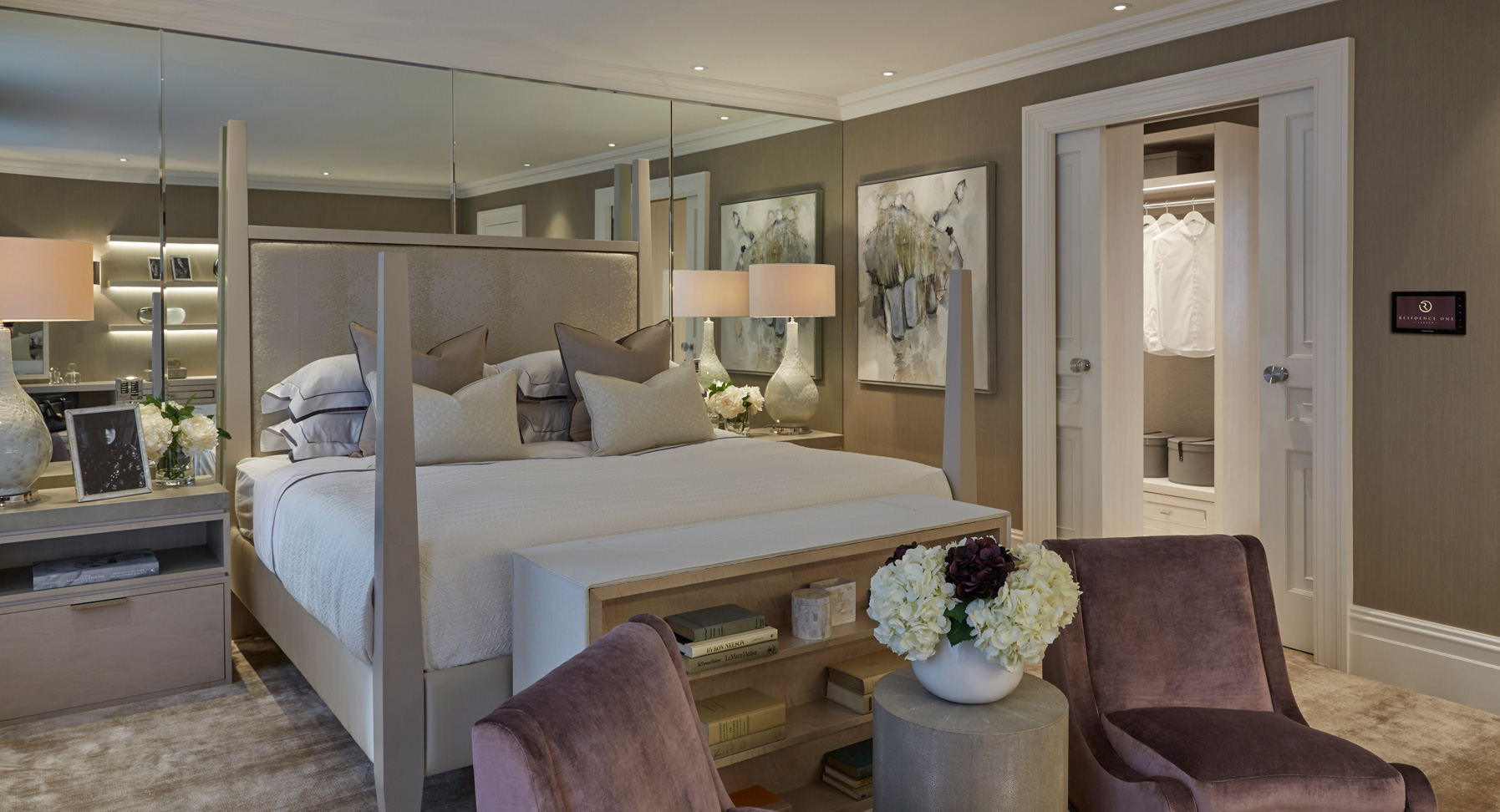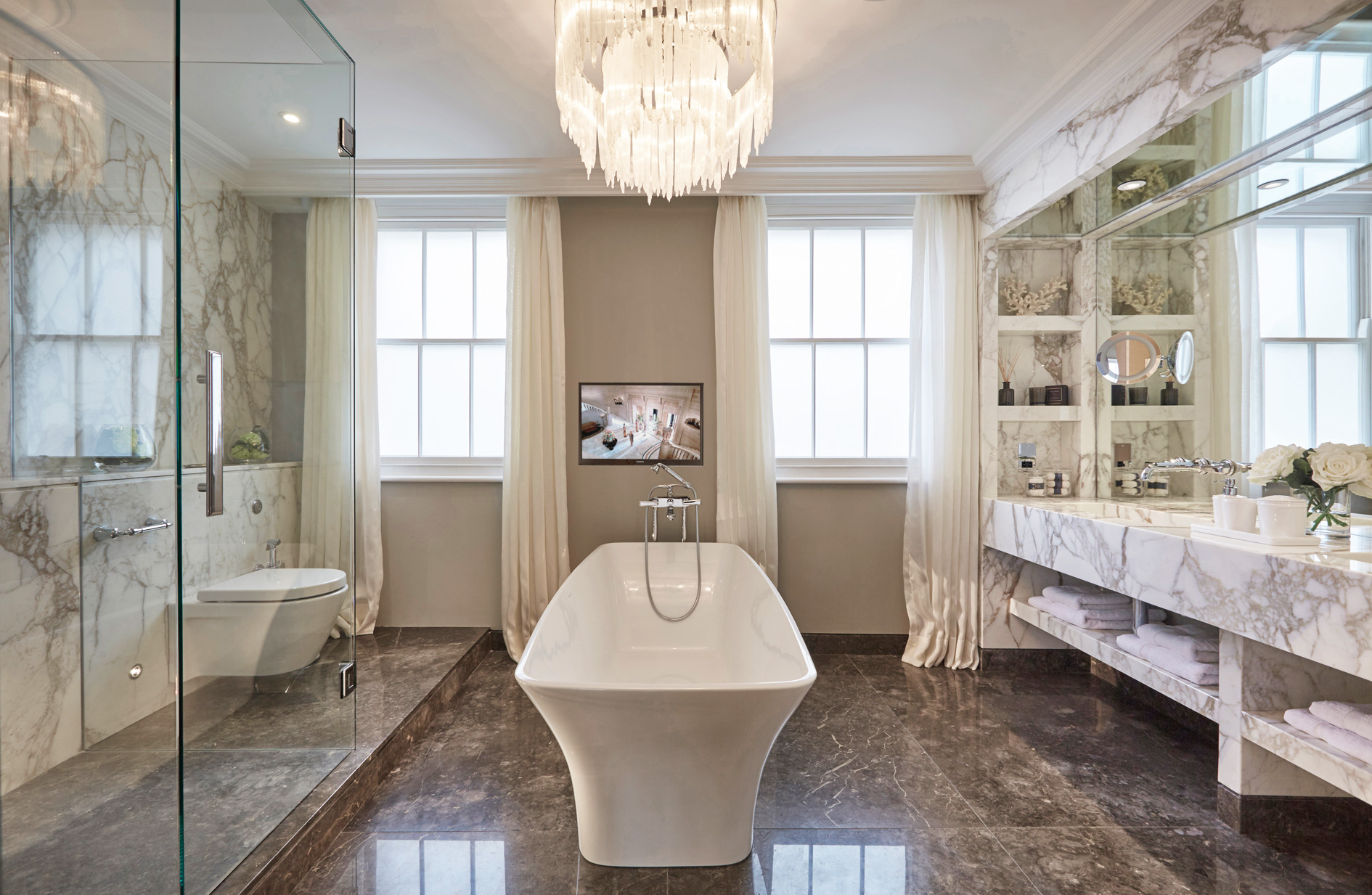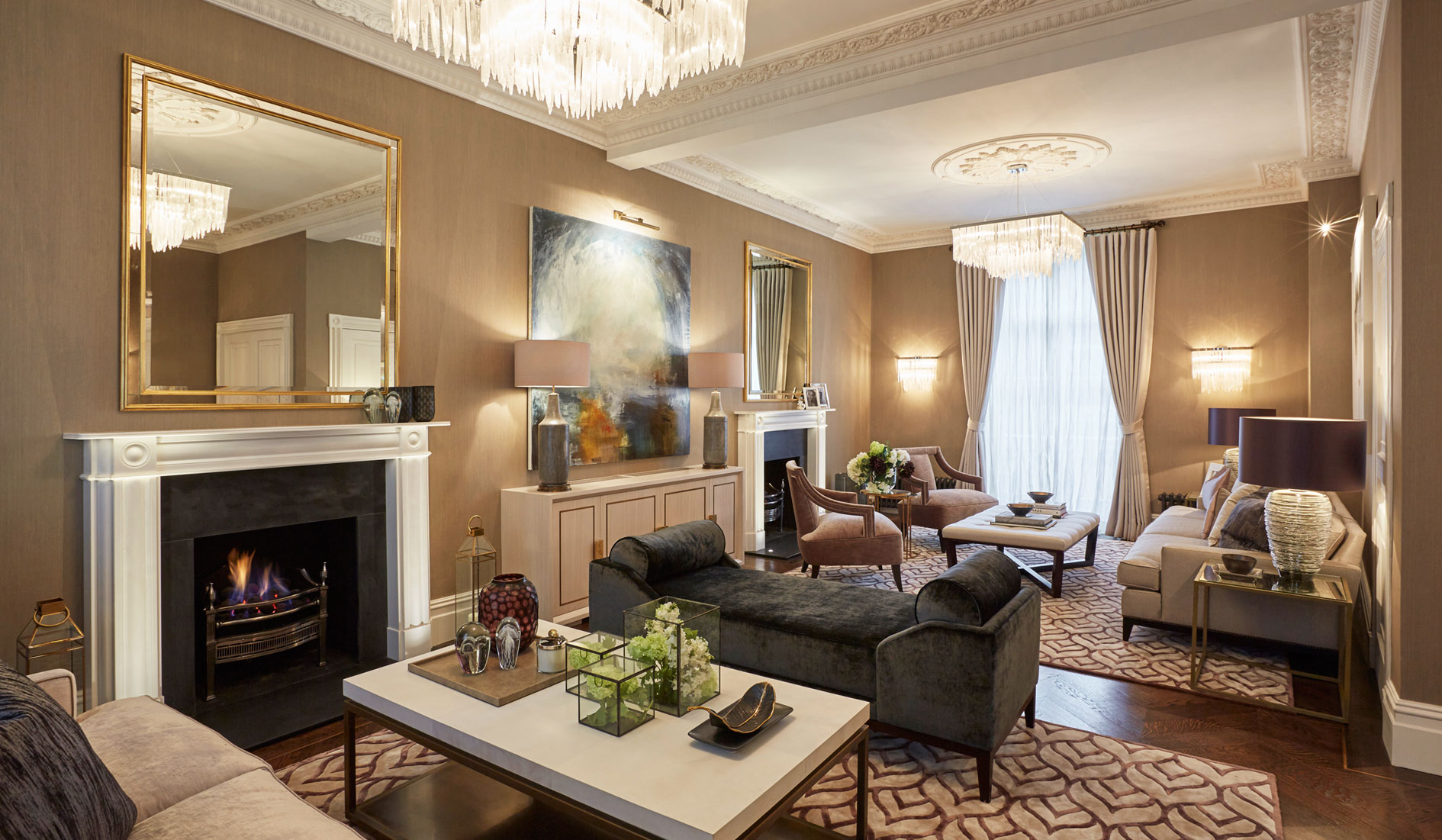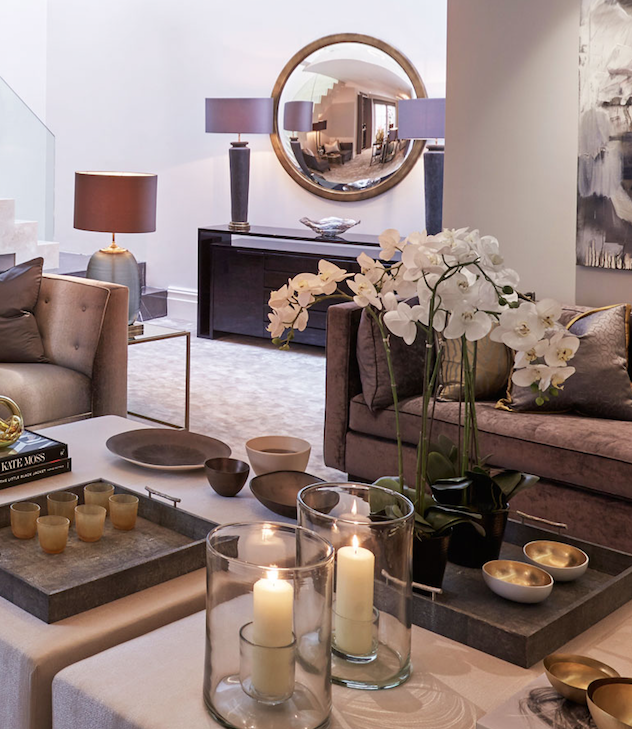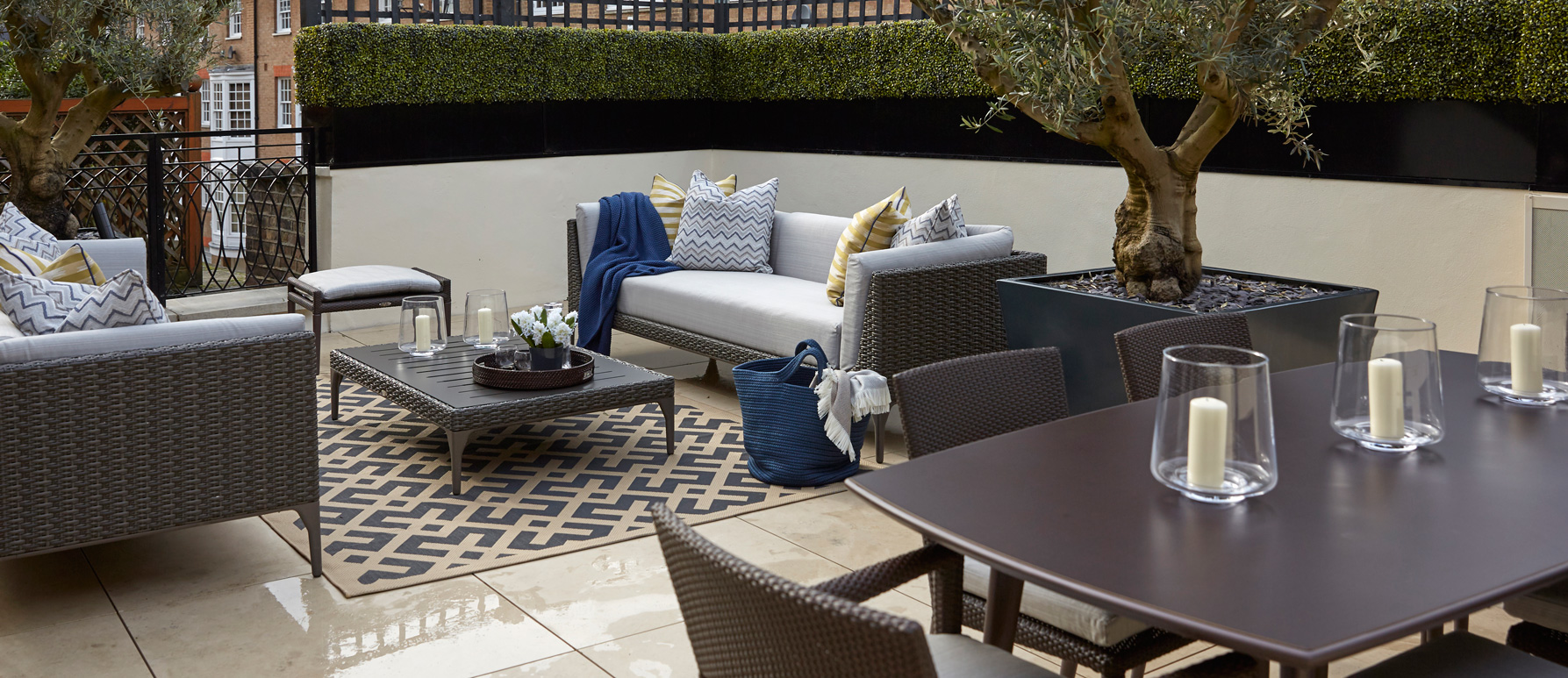Luxury interior design: yes it does do green
Come on, we all like a bit of vicarious luxury, since most of us don't live in it ourselves! And if you want to know whether eco issues do arise when designing for the super rich, interior designer Emily Carlisle at Laura Hammett Interiors says yes, they do
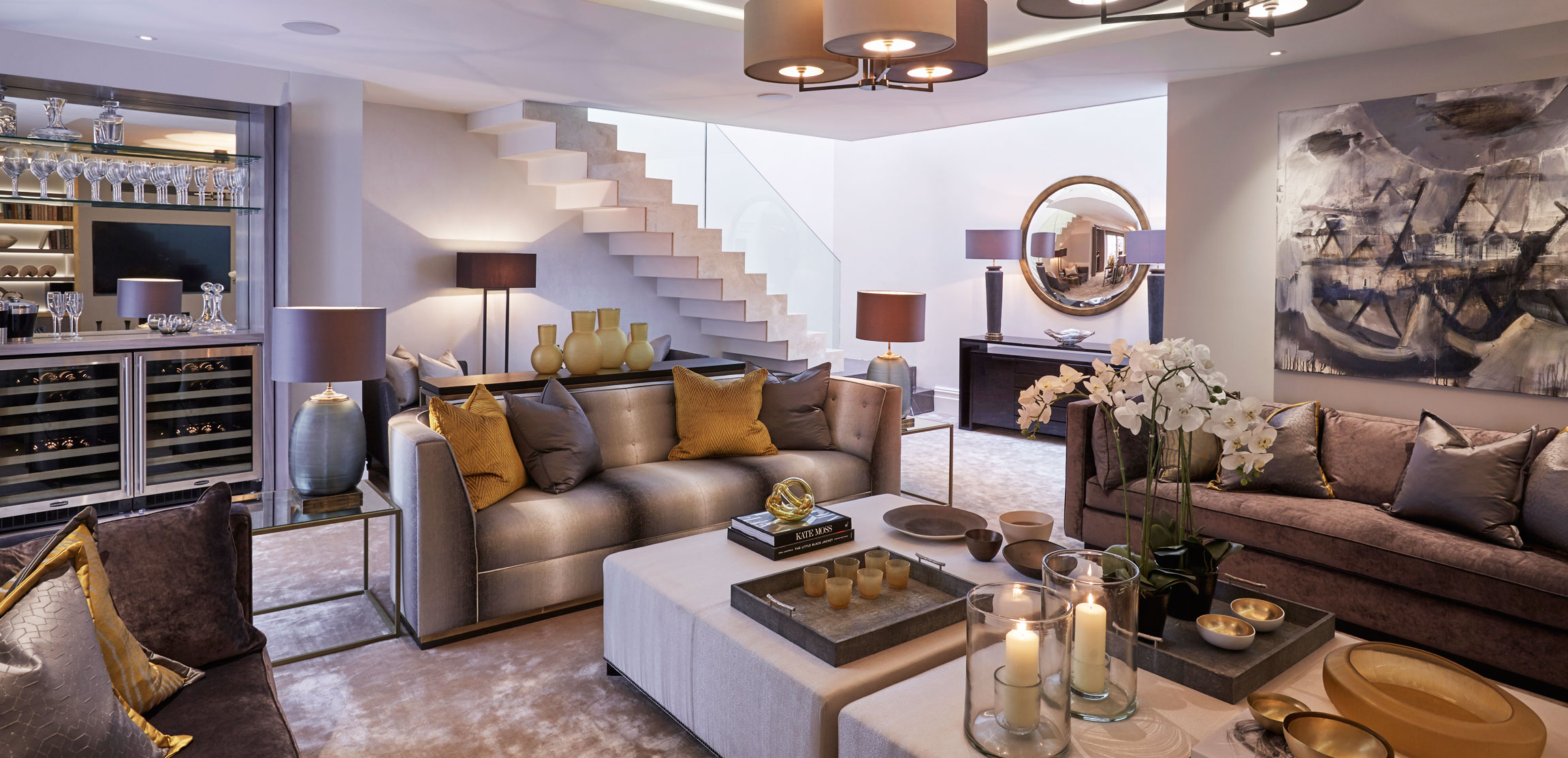
Laura Hammett Interiors carries out the interior design of luxury properties renovated by developers Residence One, and says environmental considerations do feature in its work. Pictured above: this house in central London was sold for over £14 million. It was fully furnished and accessorised and the owners had simply to arrive with their staff and luggage.
Luxury interior design holds an almost prurient fascination for many of us. And it's not a bad thing because when we pore over magazines full of gorgeous houses we get ideas for our own spaces. For example Kelly Hoppen's use of orchids has resulted in a vast improvment in the look of the nation's mantelpieces and her advice never to put cushions on an angle has likewise been invaluable (don't you just despair when you see a cushion positioned like a diamond...)
Luxury design can also be associated with excess, with the depletion of natural resources, with a lack of respect for the environment, for gas-guzzling appliances and for products being shipped in from the other side of the world.
So we talked to Emily Carlisle, an interior designer at Laura Hammett, which works hand-in-glove with niche property development company Residence One, to see if that is the case. Residence One is run by brothers Nick and Ben Wilson, who specialise in finding houses in London's best post-codes (SW1, SW3, W1) which they refurbish to exacting standards of design. Properties are sold fully furnished, right down to napkins and cutlery, so the buyer can move in straight away and start living the gracious London life.
Carlisle says obviously building regulations ensure high levels of insulation for energy efficiency in houses bought and refurbished by Residence One; and while she and the team aren't overtly driven by the word eco, she points out that very high-end interior design is pretty eco friendly. It also supports British craftsmanship, because furniture and decorative accessories at this level are bespoke.
'We certainly use environmentally-friendly materials, for example FSC-certified timbers - and our projects use a great deal of wood,' says Carlisle. 'Many of the fabrics we use are sustainable – wool, silk, linen, while lighting is low energy LED and our furniture is made to our design by British makers, who are mostly fairly local.
'And while we will use leather, we use substitute products for luxury animal finishes. For example we use faux shagreen, not real shagreen.' (In case you're not familiar with it, shagreen is the skin of stingrays and sharks.)
Designing for a composite client
A major difference between a Residence One project and a 'normal' residential interior design job is that there is no end-client breathing down your neck saying they don't like that colour or that fabric and by the way can you bring down costs by 30 per cent but yes, they do still want silk carpet throughout and mahogany wardrobes in all the bedrooms.
This is quite liberating for a designer, says Carlisle. However, she says while you don't know who's going to be living in the property, you do have to imagine them and keep them very much in mind. 'It's always useful to have a composite person in your head who you're designing for - and you need to know that client.'
In the case of the HNWs (high net worth individuals), the Laura Hammett team know quite a lot about them..... 'For example, they're people who travel, so are used to staying in luxury hotels,' says Carlisle. 'That means they expect very specialised lighting, they look for exceptional craftsmanship and detailing on furniture, they'll expect luxurious stone-clad bathrooms. They're people who expect everything to work at the press of a button, they are used to space, they want elegance and ease.'
High end hotels, particularly the boutique ones, have long used luxury interior design as a way of attracting us in, and then we start to want some of the features we experienced during our stay in our own homes. And it's the moving around the world staying in fabulous hotels that makes the composite Residence One character an exacting client, because he/she is regularly exposed to global design trends and styles.
Ben Wilson makes the point that his company's houses are never bland; but nor are they wild and wacky, ornately opulent or shrines to minimalism. 'What they are is classic-contemporary in style,' says Carlisle. 'We aim for timeless interiors, with elegance and texture and lots of detailing. Our interior design is comfortable and we believe it is in good taste.'
In the case of the 4,600 sq ft Grade II listed townhouse completed in Wilton Street, Belgravia, and sold last year for £14.25 million, the design marries a muted and fairly neutral colour scheme with rich textures, bespoke lighting, specially commissioned modern abstract art (paintings are an additional cost if the buyer wishes to keep them), beautiful stonework and sumptuously comfortable furniture.
Lighting is key
'Lighting is one of the most important aspects of a project and it must be layered,' says Carlisle. 'We don't follow trends, but we don't ignore what's happening in the design world either. For example, at the moment there's demand for bespoke pieces of statement lighting, perhaps a modern chandelier, being installed in the dining room or sitting room, but that has to be combined with wall lighting, lamps, and backlit shelving units, and the lighting will be on control system.'
Wallpaper, not paint; curtains, not just Roman blinds
All rooms in Wilton Street are wallpapered, not painted, because products such as silk wallpaper 'add subtle texture and can enhance the light.' And fabrics are crucial in achieving rooms that feel comfortable and luxurious. 'We use a lot of velvet, silk and wool and we like to have curtains made, rather than just installing Roman blinds, because they are so elegant. We won't scrimp on fabrics,' says Carlisle.
That said, she says it isn't a 'money is no object' approach because 'there is always a budget. We choose the best quality but we don't go crazy – we absolutely look for the best price.' And she says sometimes it doesn't make sense to choose the most expensive product.
'For example, we choose carpets for bedrooms and rugs to put down on wood floors. Silk rugs are lovely but they are very costly so in some areas we may choose polished cotton rugs or bamboo silk because they have the shimmer of silk but tare less expensive and are much easier to clean.... Luxury does have to be looked after.'
Furniture and storage units/cabinetry are always bespoke and Residence One likes to commission UK craftspeople to make them. Kitchens are likewise bespoke - but curiously kitchens aren't designed as the 'heart of the home' as they are in many houses, because, says Carlisle, the owners of houses such as Wilton Street won't be the people doing the cooking. 'They have staff who cook.. the owners may only come into the kitchen for breakfast.' The Wilton Street kitchen features dark wood veneer and cararra marble, with Gaggenau appliances.
One natural material that luxury design uses a lot of is stone - particuarly marble and limestone. Organisations such as Friends Of The Earth urge people not to use stone, because it's quarried and quarries can cause enormous environmental damage - though less so if they're shallow and are filled in once depleted, and are in the EU. However Carlisle says stone, not porcelain tiles, is de rigeur at this level of design and cararra marble is used for bathrooms, while area spaces needing a stone floor will be clad with limestone. Arguments in favour of stone is that it can last for centuries, and it's also possible to buy reclaimed stone from companies such as Lapicida..
But overall, Carlisle says the thing to be aware of is that very high-end design focuses on detail. 'It's the little things that the discerning eye seeks out. Luxury design isn't about being experimental, it's about echoing traditional or classical shapes with something more..for example having a metal trim on a tub chair.'
